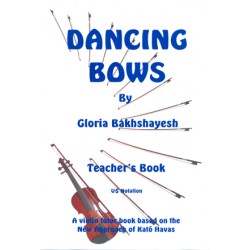Dancing Bows Pupil`s Book (US Notation)

Hot
Dancing Bows Pupil`s Book (US Notation)
£17.95
Ex Tax: £17.95
- Stock: In Stock
- Model: 1222006
- Weight: 180.00g
- SKU: 91
| Product Details | Now fully reset and updated, Dancing Bows Pupil's Book is a violin practise book for your pupils and to be used in conjunction with the Dancing Bows Violin Teachers book. It is not a self-tutor, but an essential part of the Dancing Bows violin course. This new edition, with full colour illustrations and carefully graded, tuneful practice material, takes your pupils from the earliest stages of learning to love the violin, to playing music with freedom and joy. Dancing Bows Pupil's Book must be used in conjunction with the Dancing Bows Violin Teachers book. It is not a self-tutor, but an essential part of the Dancing Bows violin course. You will teach your pupils to understand how their bodies work, how to avoid tensions by setting them a carefully graduated series of exercises. In the Dancing Bows practise book, your violin pupils will be encouraged to compose music and also to use their imagination to draw picture of the tunes. The emphasis is on genuine enjoyment. As much of the music used is selected from folk tunes, the tunes you play with your pupils on their violins can also be played by your more advanced pupils. This encourages all your pupils to play together and to help each other. Dancing Bows helps the pupils to find for themselves, in an enjoyable way, the fundamental balances for the right arm. As the violin bow becomes an extension of their body, it moves as a follow-through to the rhythmic gestures of their right arm. This makes a free and unrestricted use of the violin bow possible and forms the core of all future violin bowing technique, preventing the grating violin bow sound often associated with beginners. If the right arm is really co-ordinated in its movements, the introduction of their left hand will also be much easier. Thus the foundations are being laid for the violin pupil's future tone production in the very earliest stages of learning. |




















